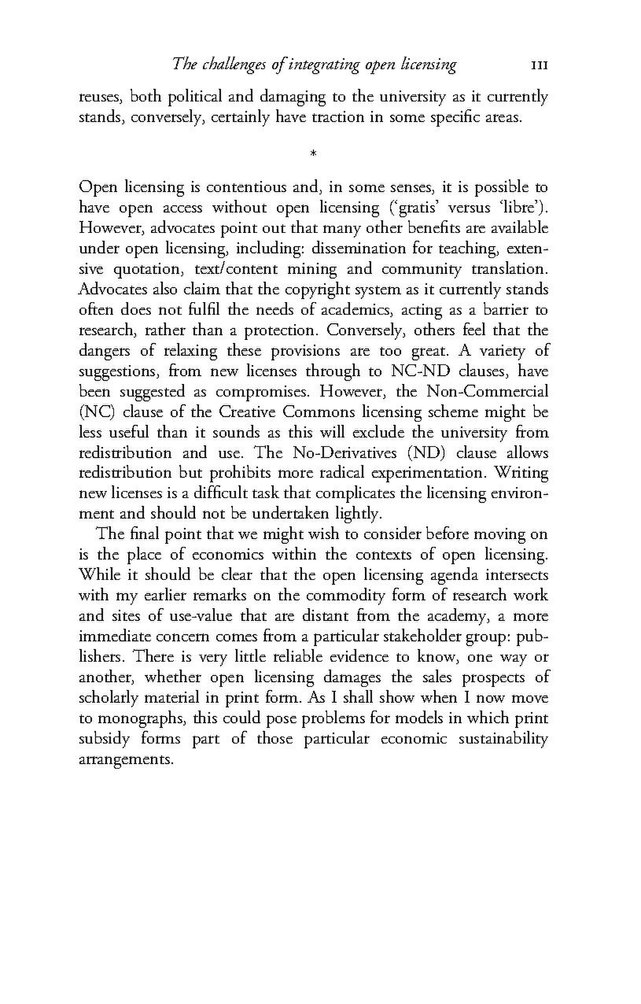reuses, both political and damaging to the university as it currently stands, conversely, certainly have traction in some specific areas.
*
Open licensing is contentious and, in some senses, it is possible to have open access without open licensing (‘gratis’ versus ‘libre’). However, advocates point out that many other benefits are available under open licensing, including: dissemination for teaching, extensive quotation, text/content mining and community translation. Advocates also claim that the copyright system as it currently stands often does not fulfil the needs of academics, acting as a barrier to research, rather than a protection. Conversely, others feel that the dangers of relaxing these provisions are too great. A variety of suggestions, from new licenses through to NC-ND clauses, have been suggested as compromises. However, the Non-Commercial (NC) clause of the Creative Commons licensing scheme might be less useful than it sounds as this will exclude the university from redistribution and use. The No-Derivatives (ND) clause allows redistribution but prohibits more radical experimentation. Writing new licenses is a difficult task that complicates the licensing environment and should not be undertaken lightly.
The final point that we might wish to consider before moving on is the place of economics within the contexts of open licensing. While it should be clear that the open licensing agenda intersects with my earlier remarks on the commodity form of research work and sites of use-value that are distant from the academy, a more immediate concern comes from a particular stakeholder group: publishers. There is very little reliable evidence to know, one way or another, whether open licensing damages the sales prospects of scholarly material in print form. As I shall show when I now move to monographs, this could pose problems for models in which print subsidy forms part of those particular economic sustainability arrangements.
